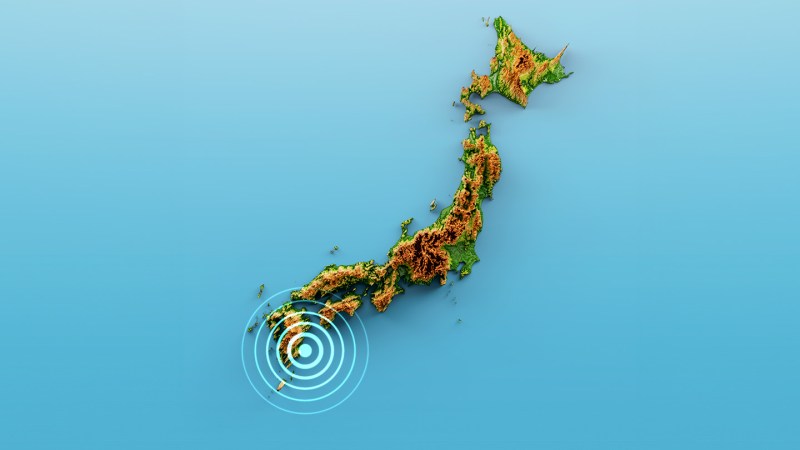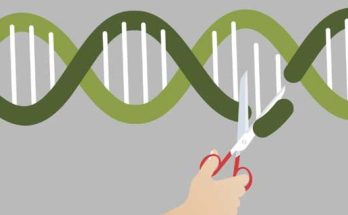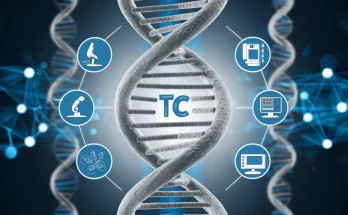
On August 8, the Japanese Meteorological Agency issued its first-ever “megaquake alert,” after a magnitude 7.1 earthquake rocked the Miyazaki prefecture in southern Japan earlier that day. The Miyazaki quake injured at least 16 people and generated minor tsunamis up to 50 centimeters tall that reached the country’s coastline about half an hour later.
The Miyazaki quake’s point of origin, or hypocenter, was located offshore and about 25 kilometers underground, near a seafloor depression called the Nankai Trough. A large fault zone sits beneath the trough, and experts are concerned that the Miyazaki temblor may have altered the distribution of stress along it, potentially paving the way for a larger magnitude 8 or greater megaquake. The Japanese government has estimated that such a temblor could kill hundreds of thousands of people.
The “possibility of a large-scale earthquake is considered to be relatively higher than under normal conditions,” the JMA said in an advisory accompanying the Thursday alert. The megaquake alert is expected to remain in effect for about a week, though the agency advises residents across southern Japan to remain wary and prepared even after the period passes.
How high is the risk for a megaquake now?
The chance of a larger quake occurring in the area in the next week or so is about one in several hundred times, seismologist Naoshi Hirata of the University of Tokyo said Thursday at a joint news conference with the JMA. The chance of a magnitude 8 or 9 earthquake occurring in the Nankai Trough within the next 30 years is 70 to 80 percent, he also said.
“There’s this long-term risk that’s always there, but there’s a short term elevation of that risk because of the [magnitude] 7.1,” says geophysicist Morgan Page of the U.S. Geological Survey in Pasadena, Calif. “This short-term risk becomes less every day that another earthquake doesn’t occur.”
Japan is no stranger to megaquakes, and Thursday’s alert is not an indication that long-term trends of seismic activity are changing in Japan. The alert was the second highest type of alert under the Nankai Trough Earthquake Extra Information protocol, which was introduced in 2017. The protocol is activated when a temblor of magnitude 6.8 or greater strikes along or near the Nankai Trough. The highest type of alert is triggered by a magnitude 8.0 or greater quake.
The trough marks where the Philippine plate slides under the Eurasian plate. At the interface of these two plates is a massive fault zone called the Nankai megathrust, which hosts earthquakes of magnitude 8 or greater every 100 to 150 years. The most recent such quake occurred in 1946 and was around magnitude 8.1.
On Friday, a magnitude 5.3 temblor struck about 10 kilometers beneath the Kanagawa Prefecture near Tokyo, outside of the Nankai Trough megaquake alert area.
How common are back-to-back earthquakes?
It is not unusual for an earthquake to trigger a larger quake shortly afterwards. Observations show that there is, on average, a 5 percent chance that a quake will be succeeded by a larger one nearby within a week, according to the United States Geological Survey. Nonetheless, it is impossible to accurately predict earthquakes or know if a temblor will be followed shortly by another (SN: 10/9/20).
Last year, researchers reported that should a megaquake occur on the Nankai megathrust, the probability of yet another megaquake occurring nearby within a week would rise to somewhere between 2.1 and 77 percent, or become 100 to 3,600 times more likely than normal.
To attempt to prepare for tremblors, Japan launched the world’s first publicly available, nationwide earthquake early warning system in 2007. The system detects the earliest arriving waves generated underground by quakes and aims to issue warnings in advance of slower, more damaging waves that arrive later. When the magnitude 9.1 Tohoku temblor struck in 2011, the system provided Tokyo residents with one minute of warning before strong ground shaking commenced (SN: 3/16/11).
Where are other megaquakes possible?
Across the Pacific Ocean, another megathrust fault lurks just offshore of North America. The Cascadia megathrust stretches from Vancouver Island to northern California and is thought to host megaquakes every 300 to 500 years (SN: 6/7/24). Like Japan, the United States operates an early warning system — ShakeAlert. Residents can sign up online to receive ShakeAlert messages on their phones.
For those who live in areas vulnerable to temblors, it’s best to be prepared well in advance of any shaking or alerts. The USGS provides a list of emergency supplies you should have to prepare for a quake. You can also visit the USGS website for more information on how to prepare for earthquakes, what to do when you receive an earthquake alert and what to do when the ground is shaking.
#Japan #issued #firstever #megaearthquake #alert
Image Source : www.sciencenews.org



